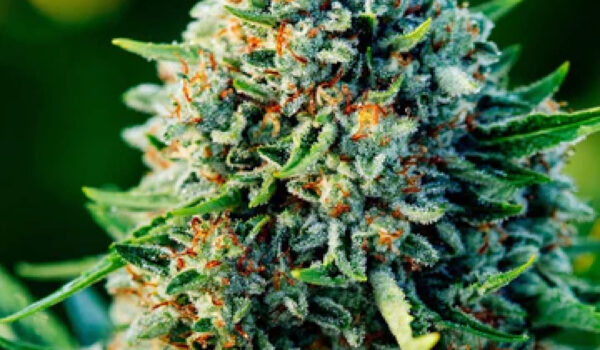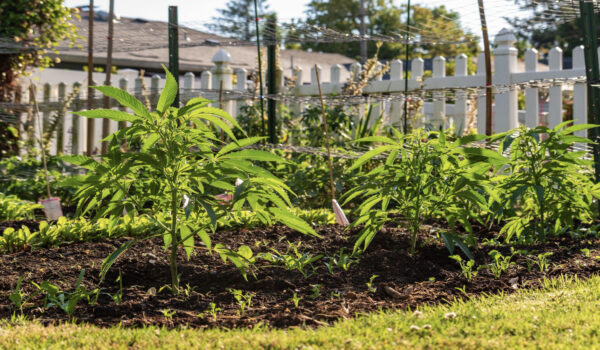by Rincon-Vitova Insectary
Aphids
Aphids suck plant sap, which causes distortion of leaves and shoots and reduces plant vigor. As aphids feed, they produce sticky honeydew, which attracts sooty molds, and reduces photosynthetic capacity. Some species also transmit plant viruses.
Identification
Aphids are soft-bodied, pear-shaped insects, 1/16-1/8 inch long.
Most are wingless, but some have transparent wings held roof-like over their backs.
Immature aphids look like smaller versions of wingless adults.
A pair of tube-like structures (cornicles) sticks out of abdomen (back end).
Life Cycle
In the spring wingless females hatch from overwintering eggs and give birth to many live female replicas (daughter clones). Daughters grow and give birth to many more nymphs within a week. The process repeats and aphids increase.
Some females develop wings and fly off to start new colonies.
In late summer/early fall sexual forms develop, mate and lay overwintering eggs.
Many overlapping generations occur per year.
Monitoring
Aphids generally develop in crowded colonies on the undersides of leaves and along stems.
Aphids occur most often on the oldest (lowest) leaves and on the young shoots of plants.
Honeydew on leaves is a sign of aphids (or other sucking insects).
Yellow sticky traps at a rate of 1 card/500 sq ft trap & help identify when the winged aphids are present.
The presence of ants can often indicate aphids (or other sucking insects).
Cultural Practices
Diligent sanitation is important.
Suppress ants because they can protect aphid colonies & remove predators.
Prune out heavily infested leaves/plant parts.
Avoid over fertilizing – aphids like high nitrogen levels & soft new growth.
Use organic fertilizers which release nutrients slowly.
Dust with Diatomaceous Earth: these jagged particles cut the insects and expose to desiccation & disease. It will need to be reapplied as it gets wet.
Blast aphids off plants with a forceful stream of plain water to reduce pest numbers.
Use a 1% soap solution, weekly, directing the spray onto new leaves to kill adult whiteflies and crawler stages.
Insecticidal soap: fatty acid salts weaken the cuticle (exoskeleton), and won’t leave a harmful residue.
To help the soap penetrate the insects’ outer shell, mix 1 Tbs of isopropyl alcohol to 1 Qt of the spray.
Insecticidal soaps & oils are harmful only whitefly directly sprayed.
Good coverage, including the underside of leaves, is essential.
Infestations on the lowest leaves are most difficult to reach.
Use soaps or oils when plants are not drought-stressed and when temperatures are under 90°F to prevent possible “burn.”
Early evening, (enough light to safely apply but sun is not shining directly on plants), may be a good time to spray.
Horticultural oils can be applied early in the season or late in the fall to destroy overwintering eggs
Neem oil – not for flowering plants (will leave smell/taste on buds)
Neem Oil (Azadirachtin): mimics IGRs: primarily kills immature insects (they fail to complete molts). It also acts as an antifeedant & repellant. Neem is less effective on aphids & some grasshoppers. Neem also breaks down in water – don’t mix more than needed. It persists 4-8 days as foliar spray, and weeks if drenched. Neem does not harm foraging bees.
Develop habitat: Eggplant trap crops
Repel with: Spearmint, Peppermint, Pennyroyal, Coriander, anise, mint, marigold, chives, onion and garlic
Flowering plants for parasites and lacewing
Attractive crops use a banker system w/ trays of barley infested with barley aphids for alternate host to establish Aphidius.
Avoid using pesticides: Neonicotinoids (imidacloprid), Pyrethroids (bifenthrin, cyfluthrin, fluvalinate, and permethrin). These materials are highly toxic to natural enemies and pollinators.
Cinnamaldahyde, extracted from cinnamon, kills aphids, but also kills beneficial insects
Bio-Control
Beauveria bassiana
68-86 °F >92% RH
An entomopathenogenic fungus wide host range, including soft-bodied beneficials
Best for sap-sucking & chewing insects
Spores germinate on insects – kill in 2-10 days
Some strains have 3-7 day residual activity
Weekly applications can prevent insect population explosions
Direct contact is important
Fine mist sprayers deliver best results
Spring/Summer aphids molt every 3-4 days, which may reduce efficacy
Application Rates: Application Rates may vary among different commercial products. Read labels carefully.
½ lb to 2 lbs per 100 gallons of water or ½ to 2 qts per 100 gallons of water or ¼ to 1 teaspoon per 10 sq ft
Reapply every 3-5 days to ensure spores are on aphids long enough to cause infection
Metarhizium anisopliae
Fungal pathogen penetrates skin, enters spiracles
Best in high humidity and moderate temps: 75-82°F
Infected insects stop feeding and die in 4-10 days
whiteflies and aphids (other strains for thrips, beetles)
Application Rates: Application Rates may vary among different commercial products. Read labels carefully.
40-80 oz per 100 gallons of water as a drench
8–64 oz per 1 acre as a foliar spray
Paecilomyces fumosoroseus
Optimal conditions >68% RH and 72-91°F
Fungal pathogen that infests whiteflies through the skin
Some strains also kill spider mites, aphids, and thrips (sometimes ladybeetles)
Compatible with other fungi & predatory mites
Application Rates: Application Rates may vary among different commercial products. Read labels carefully.
Greenhouses only: 4-6 oz per 11,000 sq ft
Hippodamia convergens
Ladybugs – will feed on a variety of aphid species both as adults and larvae.
Effective against high aphid populations
Field collected ladybeetles enter diapause so are not effective indoors in winter months.
Often leave after released
Application Rates: 1 beetle per sq ft.
Reapply if necessary
Chrysoperla rufilabris
Green Lacewing – generalist
Wingless predator for 2-3 weeks
Will focus on eggs and immature stages, but can catch adults
Application Rates: 1,000 eggs per 2,500 sq ft or 5,000-10,000 per acre
Eggs on Cards: hang 1-2 units/bush, 1-5 units tree
Pre-hatched Larvae: 20/bush, 100/tree
Reapply every two weeks to suppress populations, monthly for maintenance
Aphidoletes aphidimyza
Larvae are predators of more than 60 species of aphids
Can be used on indoor and outdoor plants.
Indoor Fans may disrupt flight, hindering performance
They are efficient at finding aphid colonies and effective against high aphid populations.
Diapauses in short day conditions – only active from mid-March to September, unless supplemental lighting is used.
Application Rates: Once the ants are gone
Apply 0.1 Aphidoletes per 10 sq ft, weekly, until the aphids are eliminated.
History of aphids, continue at this rate weekly for the duration of the crop.
Aphidius colemani, Aphidius ervi, aphelinus abdominalis
Aphidius is a group of parasitic wasps that parasitize many common species of aphids in greenhouses and outdoor.
During spring and summer, aphid populations grow too fast to be controlled by the parasite alone therefore should be used with other aphid predators such as Aphidoletes, lacewing, and lady beetles.
Aphidius is efficient at finding aphids & most effective applied preventively.
Aphidius alone will not provide control when aphid populations are high.
Aphidius species do not diapause in response to short days, so they can be used year-round.
Highly attractive crops use a banker system with trays of barley infested with barley aphids for alternate host to establish Aphidius.
Aphidius colemani: melon/cotton aphids, green peach aphid and other aphids.
Tolerates 44°F
Application Rates: 1-5 per 100 sq ft prevention
50-100 per 100 sq ft curative
Reapply weekly, 2-3 times
Aphidius ervi: potato, Greenhouse potato, pea and green peach in that preference order.
Larger parasite, longer lifecycle
Tolerates 53°F
Not active above 86°F
Application Rates: 1-3 per 60 sq ft weekly, 3-6 times prevention
Release up to every 3 days curative
Aphidius matricariae: green peach aphid, but not cotton/melon or potato aphids.
Tolerates 50°F – 90°F
Application Rates: 1-5 per 10 sq ft, weekly, preventive
1 per 10 plants, weekly curative
Aphelinus abdominalis: greenhouse potato aphid and foxglove aphid.
Not very mobile, remains in crop
Application Rates: 2-5 per 100 sq ft, weekly, 2-4 times
Summary of IPM for Aphids
Monitor weekly
Control ants!
Proper plant health
Strong spray of water
Insecticidal soap
Beauveria bassiana
Metarhiziumanisopliae
Paecilomyces fumosoroseus
End of the crop thorough clean-up to remove all plant debris.
Outdoors:
- colemani preventively
Lacewing & Aphidoletesat the first sign of aphids.
Late summer release of Aphidoletes can establish an overwintering population to control aphids in the spring.
Indoors:
Screen Vents
Releases of Aphidius spp
Lacewing as spot treatments


